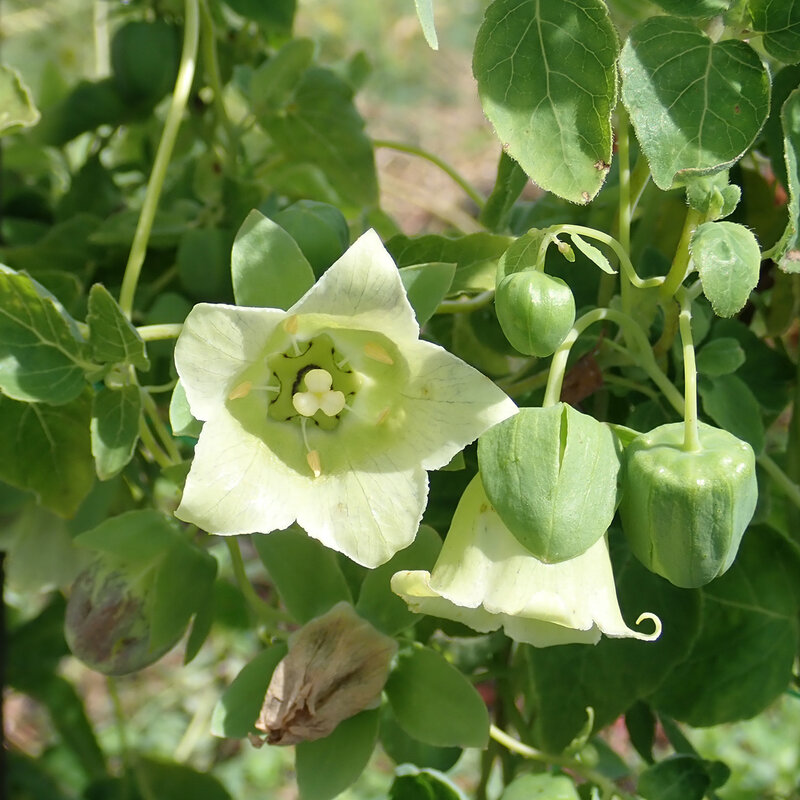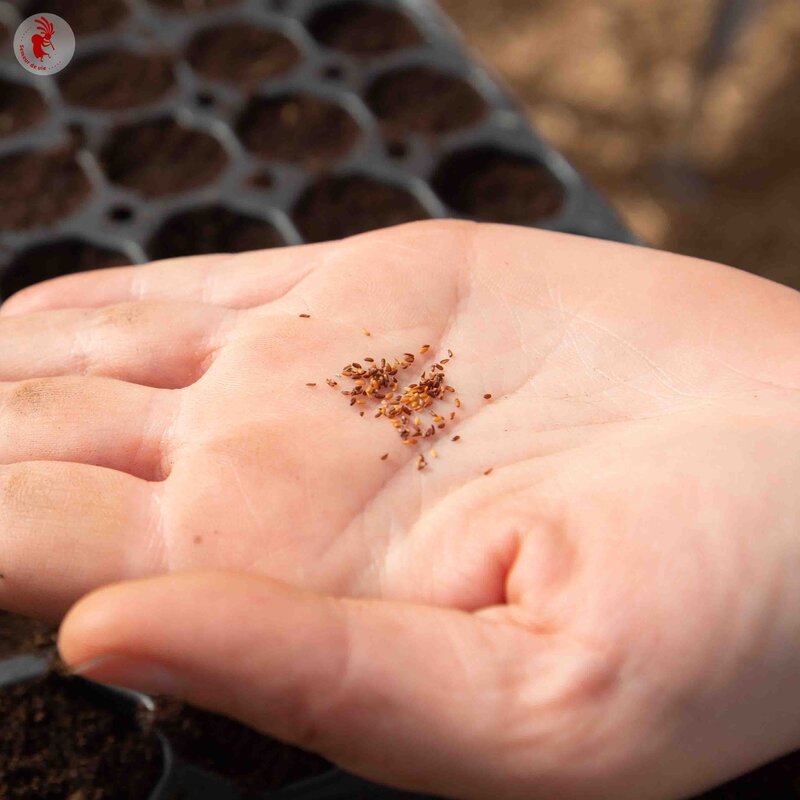Codonopsis pilosula
This highly medicinal species, from the Campanulaceae family, offers plants with voluble stems up to two meters long, bearing bell-shaped yellow-green flowers.
It's the 30 cm roots that are used in Chinese medicine, which calls it "the poor man's ginseng".
Find out more on the Kokopelli blog: "Ginseng des Pauvres and other Codonopsis: medicinal, aphrodisiac and magical plants".
in bucket
Sow in trays in spring, under a well-lit shelter. Cover seeds lightly and keep moist. Transplant into cups with two true leaves. Transplant 30 cm apart in the garden.
March, April, May
June, July, August, September
in the ground
semi-shade, sunny
medium
Codonopsis pilosula
mid-season
100 seeds
Yellow, Green
200 cm
This plant is native to Asia
In Traditional Chinese Medicine, Codonopsis pilosula has mainly been used to: Tonify the Chi - i.e. as an adaptogen - and, in particular, tonify the Middle Focus of the Triple Heater, i.e. harmonizing the functions of the liver, stomach, spleen, small intestine and gall bladder. The plant is therefore used to treat constipation, diarrhea, chronic fatigue, loss of appetite... Toning the lungs. The plant is used to treat coughs, respiratory problems, loss of voice... Tonify blood flow and hematopoiesis, i.e. the creation of new blood. Eliminate pathogens. In Korean Traditional Medicine, it is used to treat breast cancer, urogenital diseases, chronic fatigue, to calm, to harmonize menstruation, etc. Recent pharmacological studies have highlighted its hepatoprotective, immunomodulating, antioxidant, anti-ulcer, anti-metastatic, anti-tumor (particularly in liver and lung cancers), anti-diabetic and anti-senescence qualities, as well as its biological activity against gastric ulcers, blood and immune system deficiencies and nervous system disorders.










